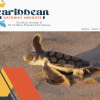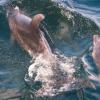Building local support for a coastal protected area: Collaborative governance in the Bigi Pan Multiple Use Management Area of Suriname Research Paper
Bigi Pan Multiple Use Management Area (MUMA, IUCN category VI) is a coastal protected area situated in the Northwest Suriname between the Atlantic Ocean and the Nickerie River. The area is characterized by wetlands with mangrove forests, contains high biodiversity, and is of socio-economic, ecological and ornithological importance. However, the MUMA is overexploited and subject to competition between various income generating activities, including uncontrolled fisheries and unregulated tourism combined. Insufficient capacity of government agencies for enforcement and policy implementation and lack of communication between relevant government agencies has further contributed to unsustainable practices that diverge from ‘wise use’ and conservation. This article analyses the case of Bigi Pan MUMA from the perspective of collaborative governance. It explores how local communities address the conflicts, user pressure, and implementation gaps that lead to unsustainable practices in Bigi Pan MUMA. In addition, it explores the potential of stakeholder engagement with the local community and key user groups to provide meaningful and regular opportunities to actively participate in decision-making structures and to deliberate on management actions. The conclusion finally presents arguments on how collaborative governance can become more effective by including local communities and by strengthening local decision-making and management.
Area of Interest: Suriname
Year:2020




